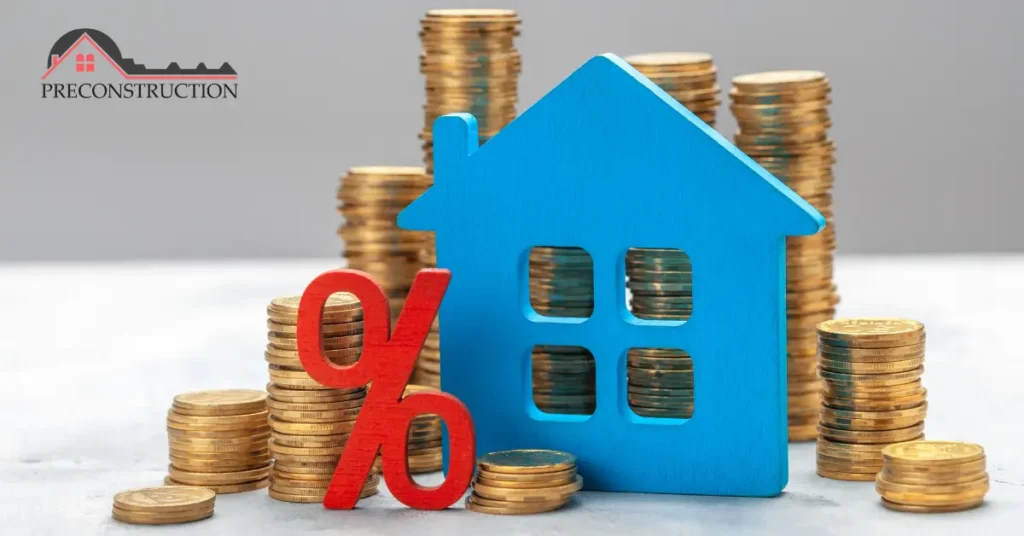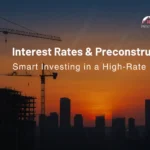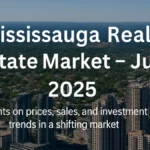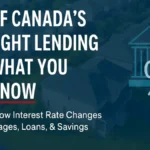With over half of Canadian mortgages set to renew by the end of 2026, homeowners are beginning to rethink their mortgage options in light of recent economic developments. On June 5, 2024, the Bank of Canada lowered its key interest rate from 5.0% to 4.75%, a subtle shift that raised more questions than it answered for homeowners considering their mortgage renewal. Now, the choice between fixed and variable rates has become even more complex.
Understanding the options available, evaluating your personal circumstances, and anticipating market trends are essential steps in navigating Canada’s changing mortgage landscape. Here, we’ll delve into the pros and cons of each mortgage type, highlight strategies to manage the current market environment, and explore how consulting with a mortgage professional can help you make the best decision.
The Current Mortgage Landscape in Canada
1. A Shift in Market Trends
The recent shift by the Bank of Canada to lower its key rate marks the first such decrease in four years, signaling a response to changing economic conditions. While a minor drop, this rate cut has created new questions for homeowners nearing mortgage renewal, with many wondering whether rates will continue to fall and if that trend should influence their choice.
As variable rates were traditionally lower during the peak of the pandemic, they became popular among Canadians looking to capitalize on low borrowing costs. However, in recent months, this trend has reversed, with variable rates now outpacing fixed rates in many cases. Presently, five-year variable interest rates are averaging around 6.7%, while five-year fixed rates are sitting at approximately 5.6%.
2. Who is Most Affected by the Changing Rates?
The current mortgage landscape primarily affects those who took out variable-rate mortgages during the low-rate period or those who need to renew within the next three years. Borrowers who locked in their rates during the historically low rates in 2021 may face a steep increase when their mortgage comes up for renewal. Understanding these dynamics is crucial, as it can help inform whether homeowners should stick with their original rate choice or consider switching strategies.
Fixed vs. Variable Rates: Key Differences and Considerations
1. Fixed-Rate Mortgages: Stability and Predictability
A fixed-rate mortgage locks in an interest rate for the entire term, offering predictable monthly payments that remain unaffected by market fluctuations. Here are some key points to consider about fixed-rate mortgages:
- Pros:
- Stability: With a fixed rate, your monthly mortgage payment remains the same throughout the term, which makes budgeting easier.
- Protection from Rate Increases: If interest rates rise during your term, your rate remains locked, potentially saving you money.
- Cons:
- Typically Higher Initial Rates: Fixed-rate mortgages tend to have higher initial interest rates than variable rates.
- Less Flexibility: You’re locked into a rate for the term, so if rates decrease significantly, you won’t benefit unless you refinance (which often incurs penalties).
2. Variable-Rate Mortgages: Flexibility with More Risk
Variable-rate mortgages fluctuate with the Bank of Canada’s overnight rate, affecting how much interest borrowers pay each month. With the recent rate cut, variable rates might seem attractive, but they come with risks:
- Pros:
- Lower Initial Cost in a Falling Rate Environment: If rates continue to decline, you could benefit from lower payments.
- Potential Savings: Historically, variable rates have been lower than fixed rates, meaning potential savings over time.
- Cons:
- Exposure to Rising Rates: If rates increase, monthly payments or the amortization period will rise, impacting your budget.
- Unpredictability: Variable payments require a higher tolerance for financial risk, as they’re subject to market conditions.
Discover the latest trends in the Toronto real estate market with Wedu, your trusted source for Ontario MLS listings and expert property analysis. For comprehensive insights into the pre-construction market in Toronto, check out Preconstruction Info to stay informed about new developments and investment opportunities. Enhance your property listings with stunning real estate photography services in Toronto from Click Media Pro.
Key Economic Indicators Impacting Mortgage Rates
1. The Bank of Canada’s Role
The Bank of Canada (BoC) sets the overnight lending rate, which influences mortgage rates across the country. This rate is a major determinant for lenders when setting both fixed and variable mortgage rates. When the BoC raises its rate to control inflation, mortgage rates typically follow suit, leading to higher borrowing costs for homeowners.
2. The Impact of Inflation
As a primary factor in BoC’s decisions, inflation plays a significant role in mortgage rates. Currently, Canada’s inflation rate is being carefully monitored, with the potential for additional rate cuts by the end of 2024 if inflation remains controlled. For those nearing a mortgage renewal, understanding these trends can help anticipate potential rate changes.
3. Market Predictions for 2024 and 2025
Economists predict that the BoC may continue with rate cuts through 2024, barring significant inflationary pressure. This makes variable rates potentially attractive, but fixed rates can provide stability if there’s concern about a future rate hike. Keeping an eye on these predictions can guide your renewal decision.
How Variable Rate Structures Impact Payments
1. Two Types of Variable Rate Mortgages
- Standard Variable Payments: With a standard variable mortgage, your monthly payments adjust as rates fluctuate. When rates increase, you’ll pay more each month, and when rates decrease, your payments go down.
- Fixed-Payment Variable Mortgages: Here, the monthly payment amount remains constant, but the portion allocated to the principal changes. When rates increase, more of your payment goes to interest rather than principal, potentially extending your amortization period.
2. Assessing the Risks of Variable Rates
For those considering variable rates, the key question is risk tolerance. If you’re comfortable with fluctuating payments and have a financial cushion to handle potential increases, a variable rate could save you money in a falling-rate environment. But if you prefer stability, a fixed rate might be more suitable.
Understanding Your Financial Situation and Risk Tolerance
1. Assessing Your Financial Goals
Before deciding on a mortgage rate, evaluate your short- and medium-term financial goals. Are you planning to stay in your home long-term, or do you expect to move within a few years? A shorter-term fixed rate could offer stability without a long-term commitment if you’re uncertain about your future.
2. Key Life Situations Affecting Your Choice
- Career Changes: If your income is uncertain or you anticipate changes, a fixed-rate mortgage can offer some stability in your monthly budget.
- Upcoming Retirement: Older borrowers may prefer fixed rates to maintain predictable payments during retirement.
- Income Volatility: For freelancers or those with variable income, a fixed-rate mortgage can offer peace of mind, as your payments won’t rise unexpectedly.
3. Scenario Analysis
Consider different scenarios, such as rising rates vs. falling rates, and assess how each would impact your budget. For instance, if you’re a young professional early in your career with high earning potential, you might opt for a variable rate to benefit from lower costs now, while those nearing retirement may prioritize stability.
Strategic Options for Mortgage Borrowers in 2024 and Beyond
1. Fixed-Rate Mortgage with a Shorter Term
Amid economic uncertainty, many borrowers are choosing fixed rates with shorter terms (1-3 years). This strategy allows them to lock in stability without committing to a rate long-term.
- Benefits: A shorter term provides predictability, and at renewal, you can re-evaluate based on current rates.
- Drawbacks: If rates rise significantly in the next few years, you may face higher rates when it’s time to renew.
2. Hybrid-Rate Mortgage
A hybrid mortgage splits your loan between fixed and variable rates, offering a middle ground for those who want stability and potential savings.
- Example: If you’re uncertain about rate trends, a hybrid mortgage allows you to benefit from both stability (in the fixed portion) and potential savings (in the variable portion).
3. Convertible Mortgage Options
Convertible mortgages allow borrowers to switch from a variable to a fixed rate, or vice versa, before the term ends. This provides flexibility if market conditions change significantly.
- Potential Pitfalls: Switching usually comes with fees or higher administrative costs, so weigh the pros and cons carefully.
Consulting a Mortgage Professional: Why It’s Crucial
1. The Role of Mortgage Brokers in Navigating Choices
Mortgage brokers can offer insights tailored to your financial situation, lender options, and interest rate trends. They may also provide alternative lending options or strategies you might not have considered.
2. Brokers and Rate Forecasts
Mortgage brokers often have access to tools that can help predict rate trends and create various financial scenarios. A mortgage professional can also help you understand prepayment privileges, penalties, and renewal options, ensuring you’re making the most informed decision.
3. Selecting the Right Mortgage Professional
Look for mortgage brokers with experience in your specific region, such as Toronto or Vancouver, where real estate markets and rates may vary. Seek recommendations, read reviews, and ask about their approach to mortgage planning.
Long-Term Financial Strategy for Mortgage Borrowers
1. Building a Financial Cushion
Having an emergency fund is essential, particularly if you opt for a variable-rate mortgage. This fund can provide security if rates increase or if you encounter unexpected financial challenges.
2. Adjusting Your Budget Annually
Revisit your budget every year and adjust it to reflect any changes in mortgage rates or financial goals. This will help you stay on track, even if market conditions shift.
Practical Tips to Prepare for Your Mortgage Renewal
1. Consider Early Renewal Options
If interest rates are favorable, renewing early can lock in a good rate before your term ends. Many lenders allow early renewals without penalty within 120 days of term expiration.
2. Improving Your Credit Score
A strong credit score can qualify you for better rates. Check your score regularly and take steps to improve it, such as paying off high-interest debt, avoiding late payments, and reducing overall credit usage.
3. Negotiation Tactics
If you have a strong credit profile, leverage offers from other lenders during renewal negotiations. Switching lenders may also yield lower rates or better terms, depending on the competitive market.
Conclusion
Renewing a mortgage in Canada’s current economic climate requires a balanced approach, considering both personal circumstances and market trends. While fixed rates provide security, variable rates offer flexibility that can lead to savings in a falling-rate environment. Consulting with a mortgage professional, reviewing your financial goals, and building a financial cushion are all key steps in preparing for a successful renewal. By following these guidelines, homeowners can make a decision that aligns with their financial goals and risk tolerance, setting a foundation for long-term financial success.






